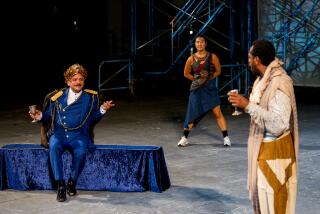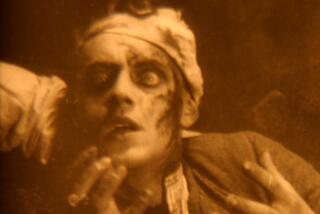Gareth Hindsâ illustrated âIliadâ follows the fights and follies of egomaniacal men
Modern-day readers may believe that theyâll need body armor to meet the barrage of challenges awaiting them in âThe Iliad.â Exploring Homerâs 3,000-year-old, nearly 16,000-line epic poem, which details events that (probably) unfolded during the Trojan War, feels appropriately like engaging in battle.
Itâs on us to keep two names straight even if they differ by a single letter (Chryseis, daughter of Chryses). Or to accept gods as all-powerful actors as well as audience members subject to fate. Or to know that the city-states, which comprise the Greek coalition opposing Troy, get several names â âAchaeans,â âArgives,â âDanaans,â deployed seemingly at random, all mean the same thing. Comprehending everything here is a task, but at the center of âThe Iliadâ is very clear: the horrors of war.
Homerâs poem churns on the recklessness of murderous, egomaniacal men. They purport to celebrate the women they reduce to property, and they slaughter indiscriminately over the course of what is â even by todayâs standards â an extremely bloody work.
âThe descriptions of battlefield death are astonishingly visceral and intense,â wrote University of London professor Adam Roberts of âThe Iliadâ in his introduction to George Chapmanâs translation. âNeither do the protagonists seem particularly noble or heroic figures to contemporary sensibilities; they bicker and squabble like children, and kill again and again.â
Unpacking âThe Iliadâ as a reader is one thing; adapting it for comics is a hurdle of a different magnitude. Enter Gareth Hinds, the Vermont-born artist who has reworked literary classics from Shakespeare, Edgar Allan Poe and more. His magnificently realized graphic telling of âThe Iliadâ â in its wealth of muted watercolored hues and evocative landscapes â condenses a more than 20-book-length poem into 251 pages of narrative comics. It follows an equally sweeping interpretation of âThe Odyssey,â which had a loose, sketchbook-style look as compared with its spiffy successor.
The Iliad glorifies courage and fighting prowess while simultaneously showing the grisly suffering inflicted on soldiers and civilians in war.
— Gareth Hinds
The painted panels of Hindsâs âIliadâ â initially scripted and penciled digitally in desktop publishing software, cleaned up and finalized, and then printed and hand-watercolored â are supported with a character guide, a scene-setting prologue and copious back matter inclusive of annotations. Each serves readers well even as the visual medium on its own goes a long way in decoding this dense Bronze Age work.
The Greeks are fighting a deadly plague, courtesy of Apollo, when âThe Iliadâ begins. The punishment owes to Achaean leader Agamemnonâs having swiped Chryseis, the daughter of Apolloâs priest, after sacking a Troy-allied city. Ending the plague means returning the woman to her father. This enrages Agamemnon.
Seized by victorious armies as âspoils of war,â maidens are prized as slave girls in Homerâs poems. King Agamemnon will send Chryseis home, but he aims to replace her with Briseis, a beautiful slave owned by Achilles, the Greeksâ most powerful warrior. Achilles, erupting with fury, reluctantly surrenders Briseis to Agamemnon, but in retribution (the poem launches with the Greek word âmĂŞnis,â or vengeful wrath), the warrior refuses to support the Achaeans in battle. Achilles opts instead to weep and gaze into the ocean, calling on his sea-nymph mother Thetis to urge Zeus, the king of the gods, to side with Troy âand show them all the folly of Agamemnon.â
When Hinds deems âThe Iliadâsâ era âa tough time for womenâ in his notes, itâs the understatement of the Bronze Age. But who better than women to amplify the costly errors of Homeric men?
When they arenât touted as receptacles of sexual desire (âSheâs more pleasing to me than my own wife,â argues Agamemnon of Chryseisâ worth) or amassed as prizes of war, Homerâs women are blamed for ruthless physical conflicts, no matter that theyâre frequently the voice of comfort or strength. When Achilles seeks consolation after Hector, prince of Troy, kills his friend Patroclus, itâs Thetis who stems his furor and equips him with new armor. When Achilles clashes with Agamemnon, itâs Zeusâ daughter Athena who recommends the most celebrated Greek warrior âcut ⌠with (his) wordsâ in lieu of unsheathing his sword. Alas, these are angry men, cursed with egos so brittle that not even a shield adorned with constellations can safeguard them from what becomes of acting on petulant rage.
Wide-angle landscapes in âThe Iliadâ comic are washed in light earth tones, while Hinds bathes the comparatively seldom-seen palace interiors in warm fireside-orange. As lengthy monologues sometimes crowd word balloons, background composite images fully visualize whatâs being said. Monochromatic gods, depicted in rough linework, are set off from their richly colored, polished mortal counterparts, while Book 18âs chronicle of Achillesâ new armor, reportedly the first example of ekphrastic verse âart described vividly in a poem, in Homerâs case, by a blind person â gets a mesmerizing splash page. Hinds embellishes the âmassive shield, five layers thick,â with fussily inked graphic forms, engravings of castles, wildlife and much more.
Who better than women to amplify the costly errors of Homeric men?
By way of chaotic page layouts that see irregular polygon panels charging here and there, Hindsâs gory war accounts recall Marvelâs Epic Illustrated magazine as much as they do aging frescoes. Scores of lives are lost in âThe Iliadââs thunderous confrontations â more so for the Greeks, who flounder against Troy without Achillesâ help. When he rejoins, itâs all the more gruesome. Hindsâ figure-drawing strengths are made known when the first spears are hoisted â battle sequences are awash in gouging and decapitations, with bearded, brawny warriors, in detailed scale-armor breastplates, brandishing swords and ornate shields. Teeth bared and faces bloodied, they leap and lunge at one another, encircled by single-stroke motion lines as horse-drawn chariots conjure clouds of dust. Even as Hinds excised some battles for length and clarity, itâs a bloodbath. Anything less would dishonor the sentiment so critical to Homerâs text.
âThe Iliad glorifies courage and fighting prowess while simultaneously showing the grisly suffering inflicted on soldiers and civilians in war,â writes Hinds in an afterword. âWhenever a nobleman is wounded or killed, Homer tells us who he was and the exact nature of his wounds, in graphic detail. These details drive home the horror and tragedy of each death.â
::
âThe Iliadâ
Gareth Hinds
Candlewick; 272 pp., $16.99. Gareth Hinds at the Los Angeles Times Festival of Books: Hinds appears at 11:30 a.m. April 13, with graphic novelists and illustrators Aisha Franz, Michelle Perez and Maximilian Uriarte.
Umileâs writing has appeared at Hyperallergic, the Chicago Reader, the Washington City Paper and elsewhere.
More to Read
Sign up for our Book Club newsletter
Get the latest news, events and more from the Los Angeles Times Book Club, and help us get L.A. reading and talking.
You may occasionally receive promotional content from the Los Angeles Times.







